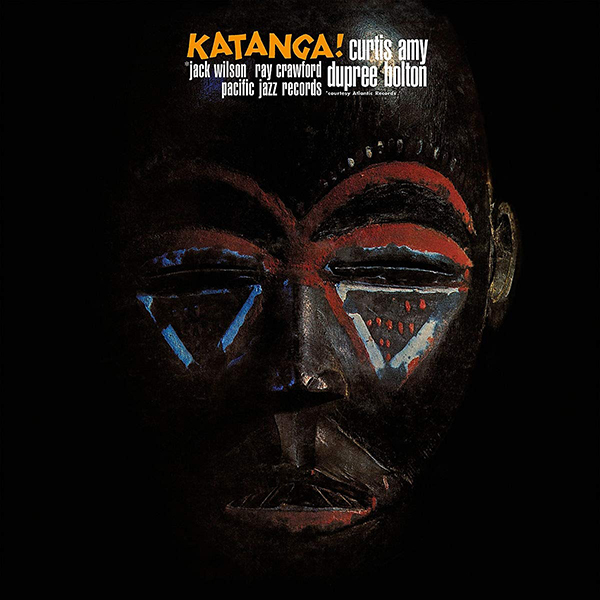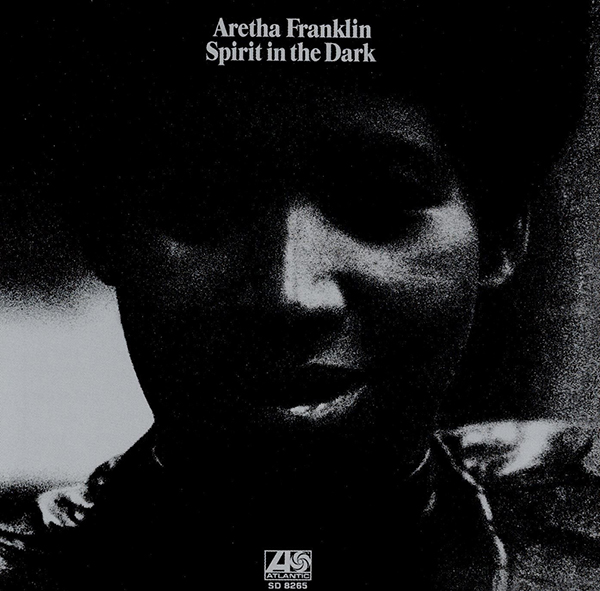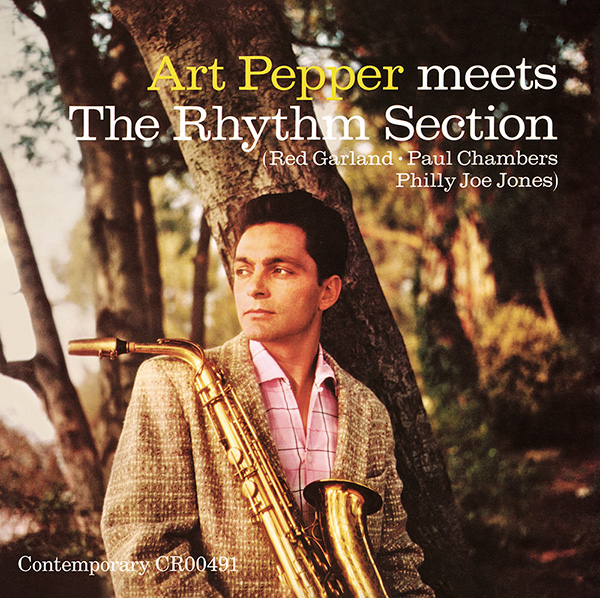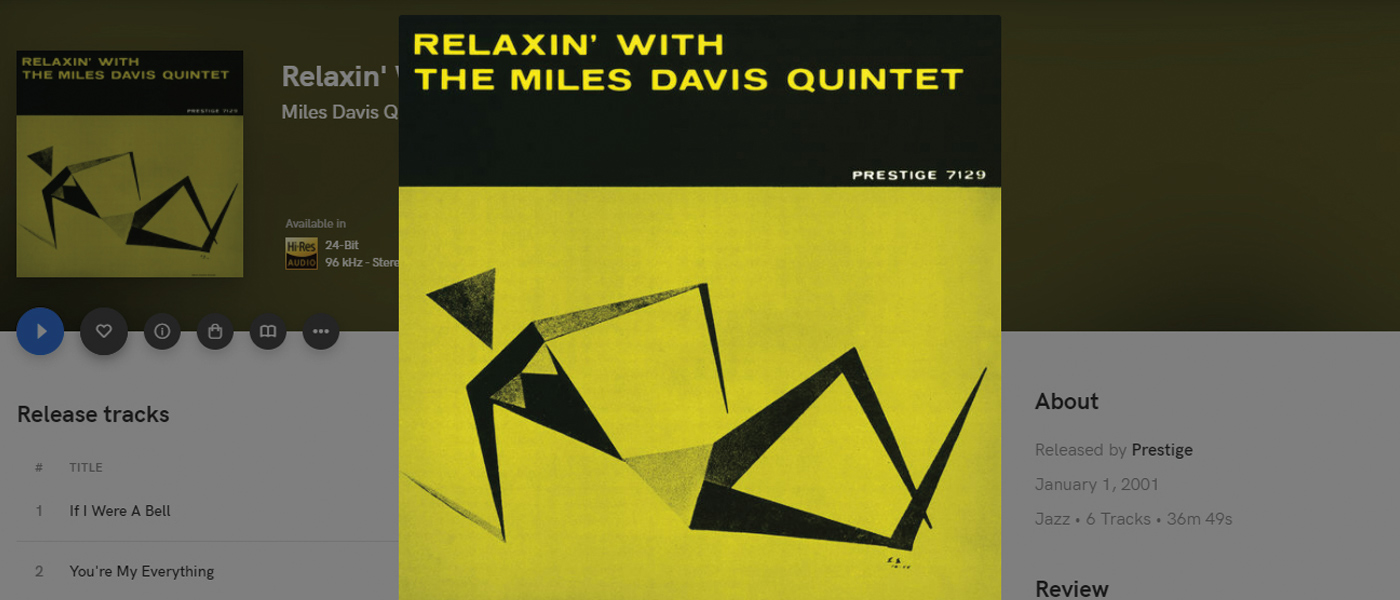
I should have been paying closer attention to the Blue Note Tone Poet Series, in general. I assumed that the quality would be there based on Kevin Gray’s involvement and knowing that the program was born of the label president’s love for the Music Matters Jazz titles that I’ve talked about here until readers can’t stand to hear about them anymore. I’d have no way of knowing how the whole thing shook down, but it seems like Don Was (el Presidente) just lifted the whole idea from the MMJ team and applied it to this series of releases to be handled in-house. Same mastering pros, same expert selection of titles to reveal, and pressed at the same plant (RTI). MMJ had a proprietary vinyl formula that doesn’t seem to be in use for the Tone Poet titles. And I’m not as impressed with the physical presentation as I was with the MMJ titles (although they do include session photos in a gatefold display when available – just like MMJ), but I should have looked a little more closely despite my fervent belief that nothing is going to top what MMJ did to reveal some of the finest recordings extant in the most flattering light possible.
As an example, I whiffed on the Tone Poet reissue of Ellington’s Money Jungle because I thought I knew that I had a pristine copy left over from my days of collecting Classic Records releases. Except that my Classic Records version is a bit noisy, and therefore not as engaging as I remember. Now, the Tone Poet take is going for big-ish bucks on the aftermarket, and I’m standing around hoping for a repress in a world of supply chain issues, manufacturing delays, and a precipitous drop in quality being felt globally throughout many, if not most, industries. Lesson learned. I should have jumped on some of the Grant Green and Jimmy Smith releases, at least, and probably the Herbie Hancock titles as well. I’m really happy with the Lou Donaldson, Dr. Lonnie Smith, Wayne Shorter, and McCoy Tyner titles I snagged, but I’m thrilled about Katanga! by Curtis Amy and Dupree Bolton…which was not originally a Blue Note release. Pacific Records Jazz released it back in 1963. That was a California Cool label, not a hard-driving NYC area repository for a million Jazz geniuses like Blue Note was. I have a killer reissue that Pure Pleasure did of the Playboys release by Chet Baker and Art Pepper, which was originally on Pacific. The reissue is lame in that they had to change the artwork and even the title to throw the scent off Hugh Hefner’s lawyers, but the music is fresh and exciting and certainly… cool.
Katanga! is a whole ‘nother animal. Closer to a Hard Bop / Soul Jazz hybrid, maybe. The beats are approachable and easy to converse with. Ray Crawford’s guitar helps with that, gives the proceedings a more rocking tone. And Amy could walk safely through that neighborhood too. That’s him playing on “Touch Me” by the Doors (I always thought it sounded like they were covering Wayne Newton) and even some classic Motown material. He married Merry Clayton, Mick Jagger’s powerhouse foil on “Gimme Shelter.” He had Rock bonafides.
Secrets Sponsor
Amy’s “Native Land” anchors the first side with a strong introductory riff that his sax and Dupree’s trumpet chant out before Amy’s first solo. Jack Wilson’s insistent piano fastens everything in place so that no one slips overboard. Amy sort of blows his emotions all across the canvas, fluttering and floating here, dive-bombing and jabbing there. Bolton sneaks in the side door soon, his moves more contemplative and considered, like he’s building towards some sort of resolution before pivoting and ceding the spotlight to Crawford. Almost like he missed the wave. Wilson takes his turn, then the ensemble convenes at the end to revisit the theme before fading away to let the listener prep for side two.
And that’s pretty much how it goes. No one is reinventing Jazz here or signaling the advent of a new epoch. The playing is solid and emotionally literate. Unfortunately, no one ever got to hear what Bolton might have become as his heroin addiction found him on the wrong side of the law, imprisoned prior to and after recording Katanga! It would be one of only two wide releases that would bear his name throughout history.
The Tone Poet titles can’t quite match the series that birthed it for pressing quality. That’d be like expecting Michael Jordan’s kids to supplant him as the greatest ever, I guess. My copy of Katanga! reveals a flawless first side, and a second side with some random clicks/ticks/pops. They couldn’t quite get there, but it’s sure fun to watch them try. I wouldn’t let these minor issues throw you. Any reasonable listener would be satisfied with this record. It’s quite a discovery. I wish Music Matters had tackled it first…

Aretha Franklin is my favorite female vocalist. If she’s not yours, it’s probably because you’re a Satanist cannibal running around with lizard blood in your veins while you kick puppies and steal pensions from retirees. I started out collecting original pressings of my favorite Aretha records because there were no reputable reissues to be had. That’s changed in the last few years, mostly thanks to Mobile Fidelity (Aretha’s Gold) and Speakers Corner (Live at Fillmore West), but also because Vinyl Me, Please released some AAA stuff that mostly sounds really good. (I did have some quibbles about their pressing of Aretha Now, but their take on I’ve Never Loved a Man… sounds phenomenal even if it looks like a child’s toy.)
Recently, VMP announced a reissue of one of my favorite Aretha titles, Spirit In the Dark. Basically, if you have tape of Aretha singing atop Duane Allman’s guitar, I want to hear it. So, I bought it despite already having a pretty pristine original. Here’s the thing: VMP’s version is in mono. This seems a little strange because Spirit is from 1970, which is slightly past mono’s prime. In fact, there was no official mono version of Spirit In the Dark at all. So… what gives?
A quick romp through the database reveals that a version actually was released in 1970 as a “monaural DJ copy for promotion only.” This info was on a hype sticker while the actual album cover still had “stereo” printed above the album title. This suggests that this was probably not a dedicated mono mix, but more likely a “fold-down” of the original stereo master. Meaning, that the stereo mix was “monauralized” to achieve the same effect that one would get by pressing the mono button on their stereo amp. No one spent any time fussing about the details of a true mono mix in these situations. They simply converted the stereo mix into mono by making the same sounds come out of both channels.
One of my more intrepid online buddies verified as much from VMP’s customer service. They confirmed all of the preceding information with additional details. To wit: the original promo copies were intended for AM radio play. And the original “mono” tape that was given to Ryan K. Smith for remastering was a little shoddy and needed to be corrected for “the best possible listening experience.” So, it was digitized, fiddled with, and the VMP reissue was cut from the resulting files.
People get hysterical about “fold-down” mixes. Because a dedicated mono mix from session tapes would almost certainly sound different than a fold-down of the stereo mix. But it doesn’t necessarily mean that a fold-down would sound worse than a stereo mix. Because it seems like the advent of stereo caused producers’ brains to explode with possibilities and the proverbial “tyranny of choice.” You can find some especially stupid early stereo mixes of pretty much any Beatles title that is available in that presentation, for example.
Secrets Sponsor
With regards to the original stereo mix of Spirit In the Dark, “Don’t Play That Song” kicks things off with the bass hard in the right channel hanging out with the horns and the harmony vocals. But the background singers get traded mid-song to the left side to join forces with the acoustic guitar and string section along with the drums. Aretha’s piano and vocals are dead center as if she were the referee between the competing sides. As dumb as all that looks on the printed page, it’s not as noticeable as I would have expected during a casual listen. A more focused listen, especially through headphones, reveals the aural offenses more clearly. So, I actually do prefer the fold-down mix in this instance.
But there’s a trade-off…
VMP’s reissue is a little brighter than my original. My ears fatigue more quickly while listening. The original has more Soul, sounds more humid like the air was heavy and the players were sweating. (“Open up a window! It’s too funky in here!!”) The newer reissue sounds slightly harsher and “tinnier.” To be clear, the differences are not overly pronounced, but they’re there. Enough so that I haven’t been able to make a solid decision about which version I prefer.
In situations like these, it often comes down to which pressing I prefer, but that’s complicated by the fact that one of my copies is literally 50 years younger than the other. Amazingly, the differences here are also less obvious than one might expect. My original sounds amazing, and not just for its age. GZ pressed the reissue, and they did a fine job. A couple of ticks here and there, but nothing that repeats, and certainly no issues with non-fill or any of that jive.
That’s a lot of words, and we didn’t talk about the music. If you’re not a lizard-blooded cannibal, you probably like Aretha. And if you like Aretha, you need a copy of Spirit In the Dark. And if you need a copy, VMP’s version would make a lovely addition to your collection. Even if you have a minty original. The differences between the versions are stark enough to warrant collecting both. It’s a triumphant album. And defiant. I feel stronger for having heard it. And who couldn’t use some extra strength at a time like… this?

I was confused by Record Store Day this year. Not in the sense that I was unsure of what was happening, unlike pedestrians who rightfully inquire about the lines outside the shops, ambling past with Starbucks’ acquisitions or literal bags of doggy dung while Fido strains against his leash, coughing and seeking further action. I just thought that all of the releases (“drops,” if I must) were to be released into the wild simultaneously. But no. The event was spread across two dates this year, the next coming in June, so as to accommodate manufacturing backlogs and the general production malaise that seems to have gripped Industry on a planetary level.
And my list was loaded, man. I was getting Soul Jazz comps, the Jerry Garcia Acoustic Band stuff, Esther Marrow’s protest anthems, Flash and the Dynamics… But I realized, just in time, that the only targeted title that I’d actually have access to in April was Art Pepper Meets the Rhythm Section. I’m like any other American in 2022. I’m not into waiting or making reasoned, rational decisions based on well-sourced information. Not if I can help it. I just want my records. Now.
So, I peeled myself out of bed, got in my lady friend’s car, and headed on over to Open Mind Music in Oakland to gather up what I could. Got in the line and stared into my Kindle so that I wouldn’t have to engage with Fido’s human when he came around asking questions and waited my turn. I would not be denied nor disappointed. Art and the Rhythm Section made it back to San Francisco and have rarely vacated my player’s plinth since. I’m hoping this is a harbinger of things to come.
Because this collusion between Craft Recordings and Contemporary Records is just the opening salvo in a series of releases that will take us through November. One per month. All-analog mastering from the original tapes by Bernie Grundman. Stoughton tip-on jackets, just like the originals had. And all pressed at QRP in Kansas. The November release will be the stereo version of Meets the Rhythm Section. I went to Oakland for the mono one. Because I can still be rational sometimes.
We have so much to look forward to if this release is representative of the others. I mean, damn. I’ve done a lot of kvetching recently about the quality of vinyl releases, in general, and with good reason. But, if I’m going to do that, I think it’s incumbent upon me to report on what’s going right when I find something that is. There are companies doing good work. Your best bet, if you’re in it for well-crafted albums made by professionals with some skin in the game, is to find a series that you trust (Tone Poet? The Acoustic Sounds Series?), and milk it for all it’s worth. Short of that, find yourself a label that partners with a highly regarded pressing plant, and keep up with what they’re doing. That info is easier to find than ever.
This Pepper album had been on my radar for so long that I forgot how it got there. I’ve been scanning the horizon for a laudable version forever. That project has been completed. The pressing is as close to perfect as one could reasonably hope for. It stays all the way out of the way so that the mastering can shine. And it does. There are so many details. So much air around the highs and such definition in the lows. It all comes floating out of the speakers with a felt sense of freedom and expressiveness. So unencumbered by the threat of faulty technology or production gaffes. It’s a joyful experience.
And that’s just on the production side. The emotions expressed through the players’ hands, feet, and lungs are what transport you. The circumstances around the session that birthed these documents on January 19, 1957, are as legendary as the compositions and performances. To review: Pepper was unaware of the session until the morning of. And he had no idea that he’d be recording with Miles Davis’s guys either. His horn was busted, and he’d been up all night prior. All of this info can be found in the album’s liners and may be apocryphal, but it’s a romantic notion. Like Willis Reed playing on one leg. I’m going with it.
Because I think I can hear the spontaneity in Pepper’s playing as he rises to the challenge of fronting a band comprised of his heroes. I like to imagine how he managed his nerves, how he pushed himself to meet the occasion. Whatever he did, it worked. His playing is as lyrical and as breathtaking as anything out of New York in that era. There’s a simultaneous feeling of joy and relaxation that almost certainly belies the pressure that Pepper felt that day. The whole thing is a triumph, and now we have it presented in museum-quality light. This is what Craft’s RSD mono take on Quiet Kenny could have been. Based on the strength of this release, I’ll certainly be purchasing the others in the series. I just hope the structure holds. I couldn’t take the disappointment if it didn’t.


